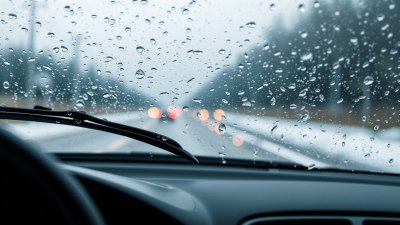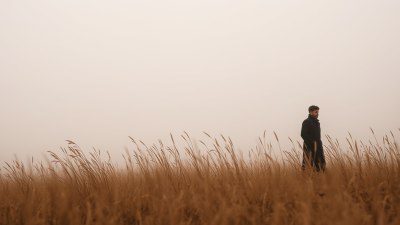What the Wind Has Against Paperwork and Patio Furniture
Explore how wind affects paperwork and patio furniture, with tips to protect your belongings from gusty weather conditions.

Image created with Flux Schnell
Wind is an invisible force that exerts a surprisingly tangible influence on everyday objects such as paperwork and patio furniture. While most people think of wind as a natural and refreshing element, it often creates unexpected nuisances and challenges. This article delves into the physics behind wind, explains why it works against lightweight objects like paperwork and patio furniture, and provides practical guidance on how to mitigate its disruptive effects.
Understanding Wind and Its Effects
Wind is the movement of air from high-pressure areas to low-pressure areas in the atmosphere. Its speed and strength are influenced by several factors, including temperature differences, terrain, and geographic location. When wind encounters objects, it exerts force due to the pressure differential it creates on surfaces. The greater the exposed area and the lighter the object, the more likely it is to be moved or displaced.
For objects such as paperwork or patio furniture, this means a strong gust can easily lift or topple these items, causing inconvenience, damage, or loss. The aerodynamic characteristics of these objects, along with their stability, significantly influence the degree of disruption caused by wind.
Why Paperwork Is Particularly Vulnerable
Paperwork, including loose sheets, documents, and books, has several properties that make it susceptible to wind. First, paper is lightweight and has a large surface area relative to its weight, which makes it easy for wind to catch and lift it. Second, the edges of paper sheets create sites where air can infiltrate, amplifying the lifting force. Third, individual sheets have little inherent friction to keep them anchored, unlike heavier and denser materials.
When a gust of wind strikes a stack of paperwork, the force can separate the sheets, scatter them, or even curl the edges. This scattering effect makes it difficult to maintain organization or protect sensitive information. Moreover, once papers are blown away, they are vulnerable to environmental damage such as dirt, moisture, or tearing.
The Impact on Patio Furniture
Patio furniture, including chairs, tables, umbrellas, and cushions, faces a different but related set of challenges when subjected to wind. Outdoor furniture pieces are often large and can present a broad surface area to wind flow, resulting in substantial force exerted on them. Additionally, many furniture types are hollow or lightweight, which reduces their stability against strong gusts.
For example, lightweight plastic chairs or tables can be propelled across a patio, risking injury to people or damage to property. Umbrellas, while providing shade, act like sails and are especially prone to tipping or being carried away by suddenly strong wind bursts. Cushions and smaller accessories can be blown away and lost if not secured.
Metal furniture, despite being heavier, can also be moved or knocked over in extreme wind conditions. The shape and design also influence wind resistance; flat surfaces or those angled against the direction of the wind suffer more force, increasing the likelihood of displacement.
Common Scenarios of Wind Disruption
Numerous everyday scenarios demonstrate wind’s disruptive power against paperwork and patio furnishings. For instance, outdoor events such as garden parties, weddings, or open-air meetings often struggle with keeping papers and decorations intact. Wedding invitations, programs, or menus flying away can become a genuine issue, halting proceedings or causing embarrassment.
In office courtyards or outdoor workspaces, loose documents left unattended risk becoming litter or lost information. Similarly, home patios, decks, or garden areas experience these common consequences during seasonal gusts, thunderstorms, or windy days.
Additionally, windy weather can cause long-term wear and tear to patio furniture. Continuous exposure to wind can loosen joints, scratch surfaces, or cause fabric wear, particularly when furniture is not properly maintained or protected.
Materials and Design Influence Wind Resistance
The choice of material and design for both paperwork storage and patio furniture greatly impacts their resilience to wind. In terms of paperwork, using clipboards, folders, weights, or covers can help minimize displacement. Laminated or bound documents are less likely to flutter or get blown away.
For patio furniture, opting for heavier materials such as wrought iron, dense wood, or concrete bases can significantly improve stability. Designs that reduce broad, flat surfaces or include wind vents in umbrellas allow airflow to pass through, reducing wind pressure. Additionally, furniture with low profiles and anchored configurations better withstand gusty conditions.
Techniques to Protect Paperwork
To protect paperwork from being blown away by wind, several simple methods can be employed. Using paperweights or weighted document holders is effective in anchoring sheets down. Additionally, clips, binders, or folders prevent pages from separating and reduce exposure to wind.
When working outdoors, placing documents inside protective covers such as plastic sleeves or folders shields them from moisture and wind. Taping documents temporarily to flat surfaces or using heavy objects like books can also secure papers in place.
For permanent outdoor setups, specialized stands or racks designed to hold papers firmly can be useful. Alternatively, digital options such as tablets or electronic devices eliminate the risk of physical paperwork displacement altogether.
Strategies for Securing Patio Furniture
Securing patio furniture against the wind requires a multi-faceted approach. The first step involves choosing pieces with weighted bases or anchoring them to the ground. Bolting or tethering items to patios or decks increases resistance to strong gusts. Furniture covers add an extra layer of protection and reduce surface wear from airborne debris.
During forecasted high wind events, rearranging furniture closer to walls or under covered areas decreases exposure. Using heavier cushions or weights can secure lighter components like cushions or umbrella poles. Additionally, storing delicate or lightweight furniture indoors when not in use is a preventive measure.
Modern Innovations in Wind-Resistant Outdoor Products
Recognizing the challenges posed by wind, manufacturers have introduced numerous innovations to improve the resilience of outdoor furniture and accessories. Many umbrellas now feature vented canopies and tilt functions to reduce wind resistance and prevent capsizing.
Furniture made from composite materials offers a balance of lightweight comfort and enhanced stability. Some products incorporate anchoring systems or built-in weights that adjust based on wind conditions. Several companies also provide modular solutions that allow homeowners to customize setups to maximize wind resistance.
On the paperwork side, digital transformation is the ultimate windproofing solution. Tablets, digital note-taking devices, and cloud storage reduce reliance on physical papers, especially in outdoor or mobile environments, effectively eliminating wind-related problems.
The Environmental Impact and Waste Concerns
Wind scattering paperwork is not just an inconvenience; it contributes to litter and waste in the environment. Dispersed documents can pollute outdoor spaces, waterways, and natural habitats, taking time and resources to clean up. Non-recycled paper waste caused by wind damage increases overall environmental footprint.
Similarly, wind damage to patio furniture may lead to premature replacement, generating additional waste and consumption of raw materials. Sustainable choices, proper maintenance, and wind-prevention techniques directly impact waste reduction and environmental preservation.
Wind Safety and Injury Prevention
Besides property damage, wind poses safety risks related to flying patio furniture or scattered papers. Furniture propelled by strong gusts can injure bystanders or damage vehicles and structures. Papers blown into walkways may create slipping hazards or obstruct vision, causing accidents.
Awareness and proactive securing of outdoor items ensure safer environments during windy conditions. Schools, public parks, and event organizers especially need protocols to mitigate such hazards. Signage warning about high winds or timely removal of loose objects during storms protects people and property.
Case Studies and Real-Life Examples
Numerous documented instances highlight the effects of wind on paperwork and patio furniture. For instance, a community outdoor art fair faced chaos when a sudden gust scattered flyers and artwork, forcing organizers to pause until cleanup. Similarly, a hurricane caused unsecured garden chairs and tables in a residential area to become airborne, damaging fences and vehicles.
These examples emphasize the importance of preparation and securing items to withstand unexpected wind events. Lessons learned from such incidents often inform better design and safety measures for future outdoor setup planning.
Seasonal Considerations and Regional Variations
Wind patterns and seasonal variations affect how frequently and intensely paperwork and patio furniture may be disrupted. Coastal areas, mountain regions, and open plains often experience stronger, more consistent winds compared to sheltered urban settings.
During spring and autumn, windy conditions tend to intensify due to atmospheric changes, increasing the risk of displacement. Summer thunderstorms and winter storms can also bring sudden, strong gusts that catch people unprepared.
Homeowners and businesses located in high-wind regions benefit from tailored advice and solutions that reflect local climate patterns, optimizing protection for belongings and enhancing comfort outdoors.
Practical Tips for Routine Maintenance
Regular maintenance extends the life of patio furniture and safeguards paperwork in outdoor contexts. For furniture, cleaning, tightening screws, and checking for rust or damage enhance stability and wind resistance. Storing cushions and fabrics during adverse conditions preserves materials and prevents wear.
For paperwork, keeping documents organized in binders or waterproof containers ensures readiness for outdoor use. Routine checks and replacing damaged protective gear prevent losses or damage over time.
To summarize, the following protective measures prove effective against wind’s interference with paperwork and patio furniture: use weights, clips, or covers for paperwork; select heavy, wind-resistant furniture designs; anchor or tether outdoor pieces; apply furniture covers and move items to sheltered areas during storms; consider digital alternatives to physical papers; and perform regular maintenance checks. Adopting these practices reduces inconvenience, damage, and safety hazards related to wind exposure.
Interplay Between Wind and Other Weather Factors
Wind often acts together with other weather elements such as rain, sun, and temperature changes, exacerbating its effects. For example, wet papers scatter more easily once softened by rain, and moist fabrics on patio furniture are heavier, possibly altering stability. Likewise, prolonged sunlight exposure combined with wind can degrade materials faster, particularly wood and fabric.
Understanding these interactions helps in selecting materials and storage methods that cater to the comprehensive challenges posed by outdoor environments.
Behavioral Adaptations and Awareness
Human behavior also plays a role in mitigating wind’s impact. Being mindful of weather forecasts, promptly securing loose items, and educating family members or staff about the risks promote a culture of preparedness. Developing habits such as routinely checking for and fixing unstable furniture or organizing papers after outdoor activities minimize accidents and losses.
Community and Urban Planning Perspectives
At a larger scale, urban planning and community design can influence wind exposure levels. Tree plantings, hedges, fences, and building layouts create wind breaks that protect outdoor spaces. Designing public areas with wind-resisting features helps reduce damage to amenities and improves public comfort.
Communities with strong wind resilience strategies lessen the financial and social impact of wind-related disruptions and promote safer, more enjoyable outdoor environments.
Future Trends and Research Directions
Emerging research into aerodynamics, material science, and smart technology offers promising advancements in combating wind problems. Self-adjusting furniture that anchors more firmly during high winds, or intelligent covers that activate automatically, may soon become mainstream. Enhanced paper treatments that increase resistance to tearing and scattering could improve handling in outdoor workspaces.
Additionally, integration of Internet of Things (IoT) sensors to monitor wind conditions in real time allows timely alerts for securing outdoor items, combining convenience with enhanced safety.
Cultural and Economic Implications
Wind’s interference with everyday objects affects not only comfort but also broader cultural and economic aspects. Outdoor events, which contribute to local economies and social interaction, often suffer disruptions due to weather interference. Investing in mitigation infrastructure boosts event reliability and user satisfaction.
Similarly, reducing paper loss and furniture damage cuts down replacement costs and resource use. Cultivating wind-awareness promotes a thoughtful approach to outdoor living, balancing enjoyment with practical constraints.
In conclusion, although wind is a natural and common element, its effects on paperwork and patio furniture are significant and multifaceted. Recognizing the risks, understanding underlying physical forces, and applying appropriate measures ensure functional, aesthetic, and safe outdoor environments. As innovation continues, the impact of wind will be increasingly manageable, allowing people to fully appreciate the benefits of outdoor spaces without unwanted interference.











